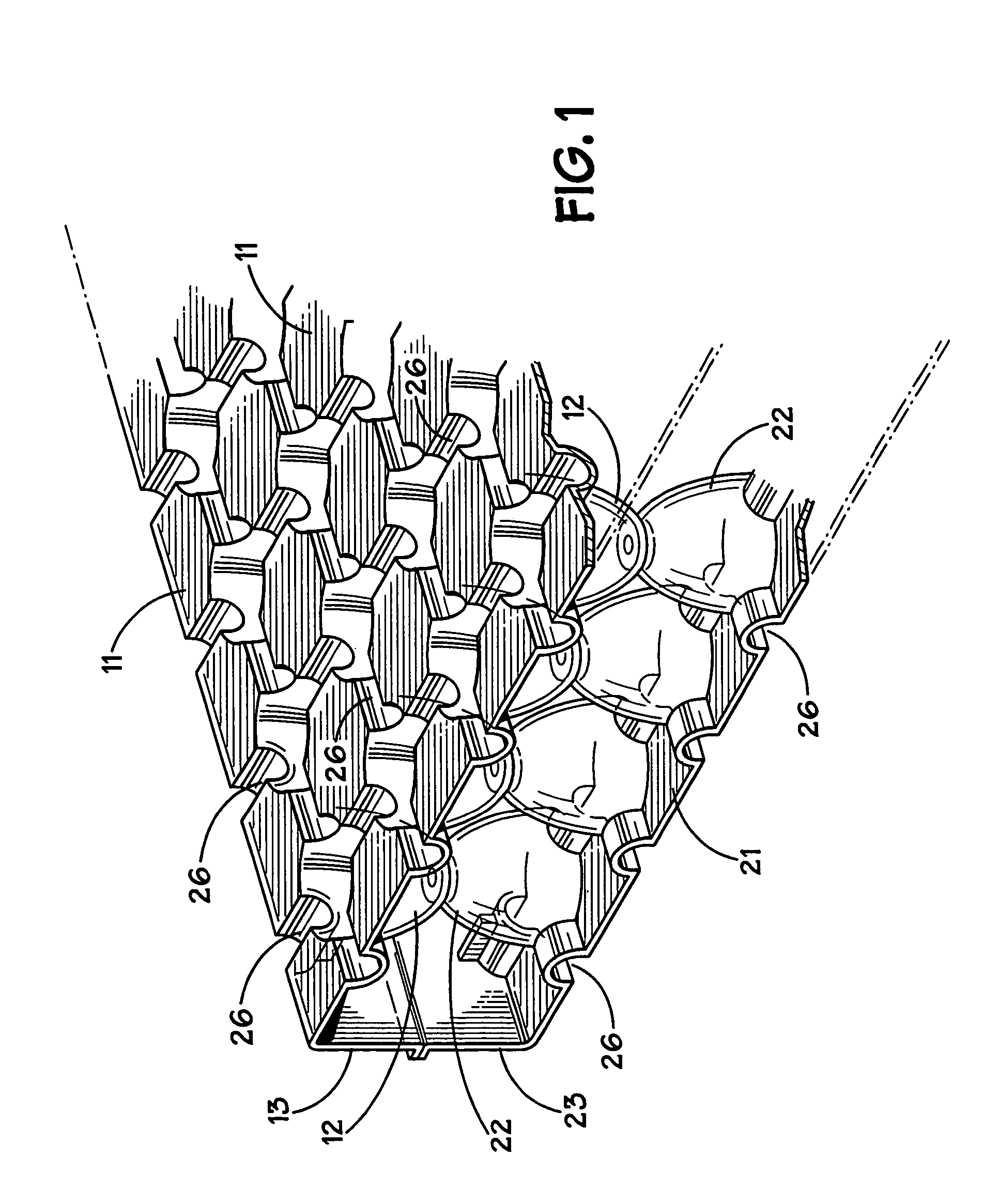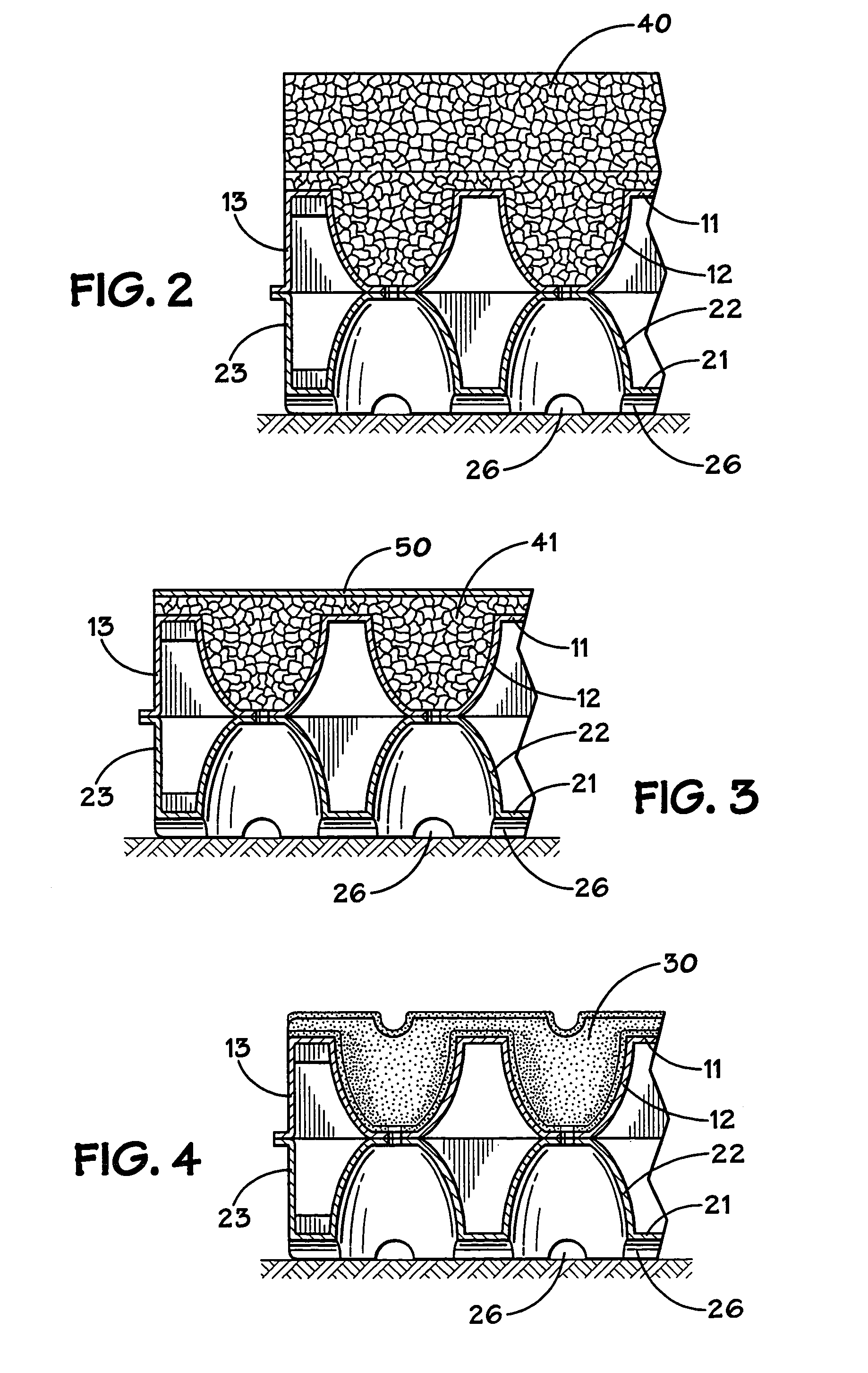Cushioning structure for floor and ground surfaces
a technology for floor and ground surfaces and joints, applied in the direction of ground pavings, traffic signals, roads, etc., can solve the problems of insufficient cushioning, rubber or rubber particles, and the cost of manufacturing and adhesion of two layers of materials, so as to achieve greater cushioning ability, less labor, and less risk.
- Summary
- Abstract
- Description
- Claims
- Application Information
AI Technical Summary
Benefits of technology
Problems solved by technology
Method used
Image
Examples
first embodiment
[0031]FIG. 2 shows a first preferred embodiment of the present invention. In the first embodiment, the wearcourse layer consists of rubber particles 40 applied to the outer surface of sheet 11. The rubber particles may partially or completely fill indentations 12. The rubber particles in each indentations may be loose or may be adhered together with a binder such as a urethane binder. The rubber particles may have irregular dimensions or may be spherical or some other shape if desired. Preferably, the rubber particles are elastic and each will have outward dimensions of less than 0.25 inches. Use of rubber granules to partially or completely fill some or all of the indentations helps make the cushioning structure of the invention effective and consistent across the typical temperature range for the outdoor activities.
third embodiment
[0032]FIG. 3 shows a second preferred embodiment of the present invention. In the third embodiment, the wearcourse layer consists of moderator 50, which is a sheet of plastic or rubber material applied to the outwardly facing surface of sheet 11. The moderator may be adhered to sheet 11 with adhesive or spot welded to the outer surface of sheet 11. As shown in FIG. 3, moderator 50 may cover a layer of rubber particles 41 that partially or completely fill indentations 12. Alternatively, the moderator and sheet each may have mating protrusions and holes to fit over the protrusions, so that the moderator is engaged to the sheet. Optionally, the moderator may have additional cushioning members with a regular grid or pattern, and hemispherical protrusions that extend into indentations. The protrusions may be integral to the moderator. Optionally, fiber particles also may be applied to the outer surface of the moderator.
[0033]FIG. 4 shows a third preferred embodiment of the present invent...
PUM
| Property | Measurement | Unit |
|---|---|---|
| thickness | aaaaa | aaaaa |
| thickness | aaaaa | aaaaa |
| thickness | aaaaa | aaaaa |
Abstract
Description
Claims
Application Information
 Login to View More
Login to View More - R&D
- Intellectual Property
- Life Sciences
- Materials
- Tech Scout
- Unparalleled Data Quality
- Higher Quality Content
- 60% Fewer Hallucinations
Browse by: Latest US Patents, China's latest patents, Technical Efficacy Thesaurus, Application Domain, Technology Topic, Popular Technical Reports.
© 2025 PatSnap. All rights reserved.Legal|Privacy policy|Modern Slavery Act Transparency Statement|Sitemap|About US| Contact US: help@patsnap.com



